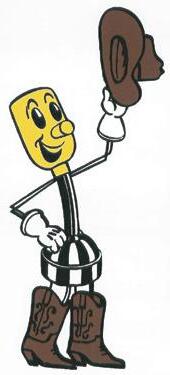CLARENDON & HEDLEY
SCHOOL CALENDARS
Registration Information
Supply Lists
Bronco & Owl
Football Schedules

Classes Start: August 14


Registration Information
Supply Lists
Bronco & Owl
Football Schedules

Classes Start: August 14

Clarendon CISD returning student registration is August 5 from 3 to 7 p.m. Everyone will enter through the elementary to pick up a folder. Online forms need to be done before August 9 to make registration day go quicker. See the Parent Portal on the school website. There will be different organizations set up this day as well as opportunities to sign up for various activities and purchase shirts from the junior high and high school cheer squads.
New student registration is August 6 from 8 a.m. to 3 p.m.
A Back to School Bash will be held at Clarendon CISD on the evening of August 12 in conjunction with Meet the Broncos. Activities for the evening will include athletic teams and other organizations hosting games and give-aways, and there will be opportunities to purchase Bronco merchandise. More details and the times of the events will be released soon. Follow The Clarendon Enterprise at ClarendonLive.com or Facebook.com/ The Enterprise for updates.
Clarendon classes begin August 14.
Hedley CISD will have online registration on Monday, July 29, and Tuesday, July 30, from 8 a.m. to 4 p.m.
Hedley classes begin August 14.
CLARENDON CISD CONTACT INFO
806-310-7220 www.ClarendonISD.net
Clarendon CISD Board of Trustees
Wayne Hardin, President • Chrisi Tucek • Robin Ellis • Taylor Shelton Chuck Robertson• Mike Word • Donnie Howard
HEDLEY CISD CONTACT INFO
806-856-5323 www.HedleyISD.net
Hedley CISD Board of Trustees
Dana Bell, President • Carole Ward • Michael Metcalf • Tangela Copelin Troy Monroe • Bruce Howard • Shauna Herbert
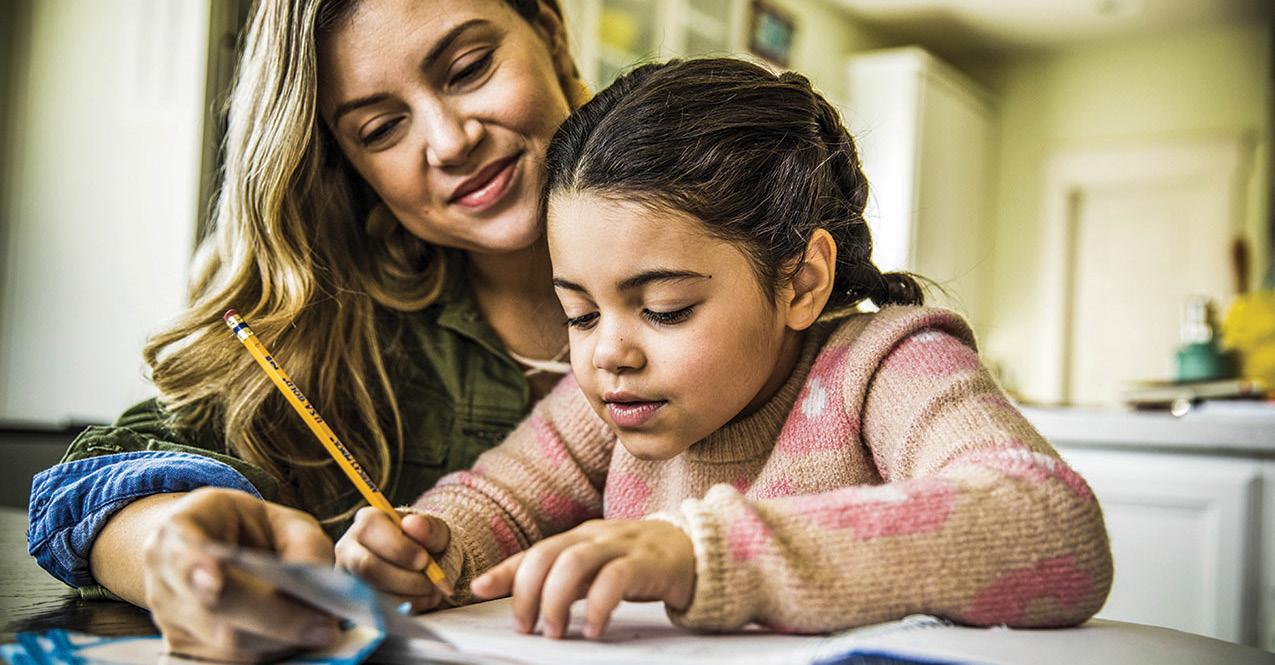
Success in school can carry over to successful experiences later in life. That underscores the benefits of developing skills in the classroom. Students learn in their own way, and at times there may need to overcome various obstacles.
The job of education does not fully fall on educators and administrators. Education begins at home. Research has found that kids benefit significantly when parents and other caregivers are strongly involved in a child's education. A 2020 study published in the Journal of Prevention and Intervention in the Community found that parental involvement in a child's education is associated with improved academic performance. Specifically, children whose parents are more involved in their educations have higher levels of academic performance than children whose parents were not as involved.
A 2005 study from researchers at the Johns Hopkins University Center of School, Family and Community Partnerships showed that school practices that encourage families to support their students' math learning at home led to higher percentages of students scoring at or above proficiency on standardized math tests. Additional research indicates the benefits also extend to other subjects and areas of learning, including language comprehension and expressive language skills.
With so much to gain from parental involvement in students' educations, parents can embrace these strategies to
get more involved.
· Develop a partnership with the teacher. Open communication with the teacher(s) can help parents stay up-to-date on what is going on in the classroom and learn early on where a student may need extra support. Then parents can offer extra guidance if it is feasible, or look into an experienced tutor.
· Be firm but supportive. Too much academic pressure may cause a child to pull back or even test boundaries, and that can lead to students falling behind in school. Parents must find the right level of involvement and guide their kids without sounding like good grades are "make or break" the relationship.
· Attend school functions. Parents can go to open houses, back-to-school nights, conferences, and other events held at school to show support and interest in their children's education. Involved parents also build schoolbased networks this way, which can be called upon if their student needs additional support in the future.
· Establish a schedule at home. Students can benefit from a schedule, with regular bedtime, homework time and opportunities to relax. Knowing what to expect and when to expect it can take some of the stress out of learning and studying, according to Nemours health.
Parents working in concert with schools and their children can lead to better academic outcomes.




































































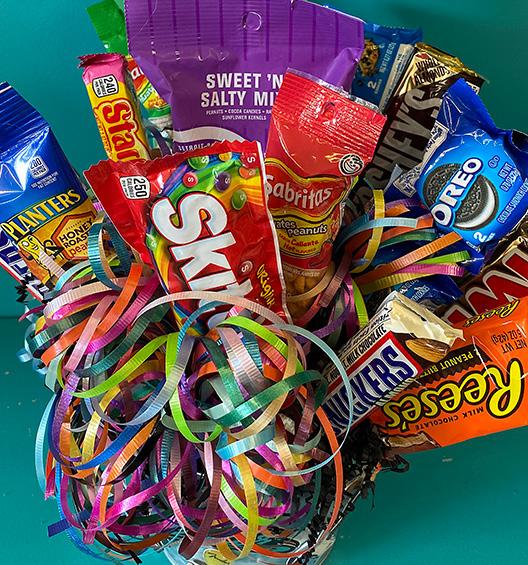

Many adults feel there's no better way to relax than curling up with a good book. Though a relaxing afternoon of reading may appeal to adults, kids could prove a little more reluctant to crack a book.
Children have much to gain from reading and being read to. According to the Children's Bureau of Southern California, a nonprofit organization devoted to strengthening vulnerable children, their families and the communities where they live, reading aloud to children supports their cognitive development; improves their language skills; prepares them for academic success; increases their discipline and ability to concentrate; and improves their imagination and creativity. Many of those same benefits apply to kids who read on their own, which may
be more appealing as kids advance through elementary school and aspire to become more independent.
Since children have so much to gain from cuddling up with a good book, parents can try these strategies to encourage kids to read more.
· Allow kids to read the same book. Parents of young readers or children learning to read undoubtedly know how much children like to read the same book over and over again. Though that might not engage moms and dads, experts note that allowing kids to read the same books again and again is an effective way to foster a love of reading in children. Researchers have linked reading the same books again and again to greater vocabulary acquisition and improved reading comprehension,
among other benefits. Kids are more likely to enjoy reading if they recognize more words and can better understand the stories, so parents can encourage kids to read the same books again and again.
· Take a book along when running errands or traveling. The Children's Book Review notes that books can be just as handy in cars as tablets and other devices kids use to watch movies while on the go. Though some children may get car sick when reading while a car is in motion, those who don't have plenty of time to read while in the backseat. On long road trips, promise a movie after kids have read for an hour. When running errands with the kids in tow, encourage them to read by keeping a couple of books or magazines in the backseat at all times.
· Practice positive reinforcement with emerging readers. Another way to encourage young readers to pick up a book more often is to praise their efforts even if they struggle with words. Patience can go a long way toward instilling a love of reading in children. If kids are struggling with a word or words, read the sentence aloud with them. Reading also has a tendency to pique readers' curiosity, so parents can encourage kids to ask questions about the books they read and help them find answers if necessary.
Reading benefits children in myriad ways. Parents can look to various strategies to foster a love of reading in their children.




Texas Comptroller Glenn Hegar reminds shoppers they can save money on certain items priced under $100 during the state’s annual sales tax holiday. This year, the sales tax holiday is scheduled for Friday, Saturday, and Sunday, Aug. 9-11, 2024.
The law exempts most clothing, footwear, school supplies and backpacks priced under $100 from sales tax, which could save shoppers about $8 on every $100 they spend during the weekend.
“For many families with children who are going back to their school campuses for the first time since the pandemic began, the sales tax holiday is the perfect opportunity to save money on school supplies and other tax-free items,” Hegar said. “As a father with three school-aged children myself, I know how these expenses can add up.”
Lists of apparel and school supplies that may be purchased tax free can be found on the Comptroller’s website at www.TexasTaxHoliday.org.
Retailers will not be required to collect state and local sales or use tax on most footwear and clothing that are sold for less than $100 during the holiday. The exemption applies to each
eligible item that sells for less than $100, regardless of how many items are sold on the same invoice to a customer. For example, if a customer purchases two shirts for $80 each, then both items qualify for the exemption, even though the customer’s total purchase price ($160) exceeds $99.99.
The exemption does not apply to the first $99.99 of an otherwise eligible item that sells for more than $99.99. For example, if a customer purchases a pair of pants that costs $110, then sales tax is due on the entire $110.
The exemption also does not apply to sales of special clothing or footwear that the manufacturer primarily designed for athletic activity or protective use and that is not normally worn except when used for the athletic activity or protective use for which the manufacturer designed the article. For example, golf cleats and football pads are primarily designed for athletic activity or protective use and are not normally worn except for those purposes; they do not qualify for the exemption. Tennis shoes, jogging suits and swimsuits, however, are commonly worn for purposes other than athletic activity and thus qualify for the exemption.
Additionally, tax is due on sales of accessories, including jewelry,
handbags, purses, briefcases, luggage, umbrellas, wallets, watches and similar items.
The sales tax holiday exemption does not extend to rental of clothing or footwear; nor does it apply to alteration or cleaning services performed on clothes and shoes. These items continue to be subject to state and local sales or use tax.
Backpacks under $100 and used by elementary and secondary students are exempt. A backpack is a pack with straps one wears on the back. The exemption during the sales tax holiday includes backpacks with wheels, provided they can also be worn on the back like a traditional backpack, and messenger bags. The exemption does not include items that are reasonably defined as luggage, briefcases, athletic/ duffle/gym bags, computer bags, purses or framed backpacks. Ten or fewer backpacks can be purchased tax-free at one time without providing an exemption certificate to the seller.
Texas families also get a sales tax break on most school supplies priced at less than $100 purchased for use by a student in an elementary or secondary school.
The following is a list of qualifying school supplies (if priced less than $100):
• Binders
• Book bags
• Calculators
• Cellophane tape
• Blackboard chalk
• Compasses
• Composition books
• Crayons
• Erasers
• Folders; expandable, pocket, plastic, and manila
• Glue, paste and paste sticks
• Highlighters
• Index cards
• Index card boxes
Legal pads
Lunch boxes
• Markers (including dry erase markers)
• Notebooks
• Paper; loose leaf ruled notebook paper, copy paper, graph paper, tracing paper, manila paper, colored paper, poster board, and construction paper
• Pencil boxes and other school supply boxes
• Pencil sharpeners
• Pencils
• Pens
• Protractors
• Rulers
• Scissors
• Writing tablets
Although vision loss is typically associated with aging, people of all ages can experience issues that contribute to diminished vision. Sometimes parents may be unaware that their children have low vision or other issues compromising their sight, particularly when children are too young to verbalize their impairments. The Mayo Clinic notes additional symptoms, such as squinting while reading or holding reading material closely may be more apparent.
Parents, caregivers and even teachers can keep an eye out for these symptoms to determine if kids are having vision problems.
• Blurriness: A child may complain of things being blurry, whether that means words in a book or on a smart screen in the classroom.
•· Headaches: Straining to see better can cause headaches. If a child starts complaining of frequent headaches, an eye exam may be in order.
• Attention span: If your child quickly loses interest in games or other lengthy activities, it may be that poor vision is making it more difficult to fully participate.
• Losing place: Someone with vision issues may experience difficulty keeping track of words while reading.
• Eye rubbing: Prevent Blindness says rubbing tired eyes can be an indicator of a vision problem, as can tilting one's head or thrusting the head forward.
• Feeling dizzy: Some people with vision problems feel dizzy or out of sorts at times.
• Physical symptoms: Sometimes vision problems may be apparent because you can see there is something amiss. Eyes that don't line up, eyes that appear crossed, redness in the eyes or rims, or red, inflamed eyes can be

symptomatic of a vision problem.
• Eye exam results: Eye doctors conduct a series of tests during an eye exam. During an automatic refraction test, visual acuity can be measured when an autorefractor shines light into the eye and measures the eye's response. It's commonly used with children who cannot communicate what
they're seeing and can help diagnose vision trouble.
Vision issues can present themselves in children and not be as readily apparent to the adults in their lives. Familiarizing oneself with certain symptoms is a way to diagnose vision trouble earlier.

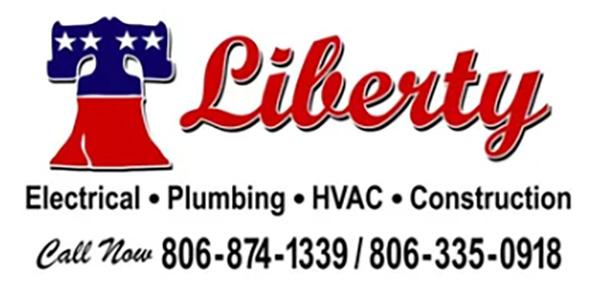
www.vertex42.com/calendars
Aug. 14- Sept. 20 = 27
Sept. 23 - Nov. 1 = 29
4 - Jan 10 = 34 days
Approved 3-4-24
Hedley Independent School District

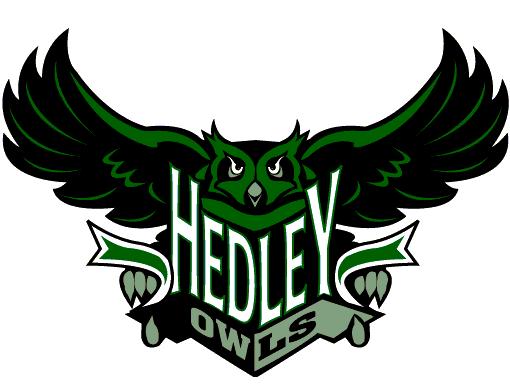








Total Number Staff Inservice/Workdays
PRE-KINDERGARTEN
1 Blanket or Folding Nap Mat
1 Complete change of clothes including socks & underw ear labeled with name in a Ziploc bag
2 Boxes of Crayola Large Crayons
1 Pair of Fiskars scissors (round tip – metal blade)
1 4 oz. bottle washable white glue
4 Glue Sticks
1 Backpack marked with child’s name (no wheels) Regular size
2 Plastic durable folders
3 Boxes of Kleenex
1 Package of 4 count BLACK Expo Dry Erase Markers
2 Washable Crayola Markers, with pink –10 pack
1 Plastic box to hold supplies
1 Spiral notebook
1 Container of baby wipes
1 Hand Sanitizer
1 Box Gallon size slidelock baggies
1 Box Quart size slidelock baggies
1 Playdoh – 4 pack or 6 pack
1 Reusable water bottle with pull-top with child’s name on it
1 Crayola Washable Watercolor Paint
1 Container of Clorox Wipes
Please label everything with their name.
1 Large zipper pouch
1 box of ONLY 8 crayons
1 pair scissors (Fiskars brand)
1 Elmer’s school glue, white only
1 10 pack CRAYOLA markers (broad line, classic colors)
1 pack of No. 2 sharpened pencils
2 spiral notebooks
3 two-pocket plastic folders with brads (sturdy)
1 box of zip-lock bags (boys – gallon, girls –quart)
1 pull-top water bottle
4 glue sticks
1 4 color set of Expo Dry Erase Markers
2 pair of headphones
3 box of Kleenex
1 large hand sanitizer
2 pkg. of dry erase markers
2 large box tissues
12 #2 pencils (yellow)
2 wood pencils for music class
2 box of 24 crayons
10 glue sticks
2 erasers
2 box of 8 washable markers (classic/basic colors)
3 folders with pockets
1 spiral notebooks (7080 page, 10 1/2” x 8”)
1 reusable water bottle (pull-top)
1 backpack
1 box zip lock bags (gallon size)
2 pair Headphones for computers & guidance
Please write student’s name on all supplies
20 Sharpened #2 pencils, Ticonderoga brand
2 pink erasers
1 Elmer’s school glue (white only)
10 jumbo glue sticks
3 box Crayola crayons (24 ct.)
2 box Crayola markers (broadline, primary colors)
2 Expo Markers, black (4-pack)
1 watercolor set
1 pair scissors (Fiskar brand)
1 ruler
1 Drawstring bag
1 large zippered pencil pouch (no boxes please)
4 plastic folders with brads
2 spiral notebooks –single subject
2 Clorox / Lysol wipes
3 boxes tissue
2 pair Ear buds/headphones (NO Bluetooth please)
Reusable Water Bottle
50 #2 pencils – Will need 2 per week –No mechanical.
1 1” or 1½” 3-ring binder for planner and homework folder
2 Pink erasers
2 Highlighters
1 Box markers
1 Box crayons
1 Box of Colored Pencils
6 EXPO dry erase markers – Any color, but yellow.
1 Small Bottle liquid glue
1 Ruler 12 inch/ 30 cm
1 Pair of Adult Sized pointed school scissors
1 Large zippered pencil
pouch(es) to carry all supplies in backpack
3 Composition books – 2 ELAR and 1 Science
4 Plastic folders with pockets and brads –Any Color
4 Large boxes of tissues
1 Clorox Wipes
1 Water bottle that seals shut. Must bring a water bottle to school daily.
2 Pair of headphones –not earbuds – student will be responsible for charging wireless headphones. Music Supplies
1 Box of Colored Pencils
1 ½” OR 1” 3-ring binder
FOURTH GRADE
Please put child’s name on each item.
1 three-ring zipper binder
1 2-inch 3 ring binder with 2 packages of dividers for RLA
3 pkgs. loose leaf notebook paper
2 folders with pockets & holes for inserting in binder
2 composition notebooks (standard size:9¾ X 7 ½ with 100 pages)
36 #2 pencils (NO MECHANICAL) Please be prepared to purchase more pencils throughout the year for your student.
2 Highlighters (Any color)
1 Box of Markers
1 pair scissors (Fiskars brand for kids)
1 Elmer’s school glue
4 Glue Sticks
1 box of 24 crayons
1 12” ruler with metric markings
1 pencil bag with zipper
& holes for inserting in binder
3 boxes of tissue
2 boxes of colored pencils (12 pack)
3 pink erasers
1 4 pack of Black EXPO markers
2 set of earbuds (good quality- will be needed all year)
1 5-tab dividers
1 1.5-inch notebook with clear view cover (cover pocket to slide in cover page)
1 water bottle (pull top if possible)
1 ½” or 1” 3-ring binder for music class
$5.00 for 2 recorders for music class -or- bring 2 recorders from home
FIFTH GRADE
2 pkg. loose leaf notebook paper
40 #2 pencils
1 box of 12 map pencils
6 highlighters, multicolored, large size
1 eraser
1 pkg pencil top erasers
1 pair medium size scissors
6 glue sticks, large
4 large boxes of tissue
1 set of headphones (to use with chrome books) Many of the programs that we use have audio features that the student can’t use without headphones.
1 set of headphones for Guidance
1 folder with pockets and fasteners
3 100 sheet/200 page wide ruled composition books
1 1” binder
1 pkg. pocket dividers
4 pkg. of (4 each) Expo dry erase markers,
Student desks are a personal whiteboard and we use A LOT of expos markers.
1 large pencil bag
1 ½” or 1” 3-ring binder for music class
$5.00 for 2 recorders for music class -or- bring 2 recorders from home
Basic Supplies
2 boxes pencils
2 packs of black pens
2 packs of blue pens
1 packs of red pens
1 box of colored pencils
8 expo markers
1 pair of scissors
1 pack highlighters
5 glue sticks
1 bottle of glue
1 pack eraser toppers/ erasers
1 package notebook paper
Headphones or earbuds
Pencil Bag
Box of tissues
Hand sanitizer
Water bottle
RLA: -1 package of 100 colored lined index cards
Snure: 1- 1 Inch Binder
1 pack Dry Erase Markers
Woodcook: 1 -2 inch binder
1 packet of five dividers
1 packet of notebook paper
1 White out
12 black and blue pens
K. Grahn: -2 composition notebook
1 package 100 white lined index cards
Optional: drawstring bag to carry loose supplies from class to class.
HEAD START
Water bottle
Full size backpack
1 package of washable markers
Small blanket or towel
Boys-Wet wipes and Kleenex
Girls-hand sanitizer and Clorox wipes
Extra clothes including undies
KINDERGARTEN
1 package of #2 yellow pencils (24 count)
Please, no decorative pencils, they do not sharpen very well. American made seem to be the best.
1 crayon box
Two 8 count boxes of crayons and 3 boxes of
24 count crayons.
(Crayola crayons are the best)
3 large boxes of Kleenex
4 pocket folders (no brads) plastic lasts longer
1 box Ziploc bags (quart size with zip top)
1 box of Ziploc bags (gallon size)
1 spiral notebook
One pair of headphones for computer
20 Elmer’s glue sticks
1 pair of Fiskar scissors with rounded blades
One package of colored pencils
FIRST GRADE
24 #2 pencils
2 glue sticks
2 boxes of 24 count crayons
1 box of colored pencils
Headphones
2 large pink erasers
1 highlight marker
1 pair of scissors
Pencil box
Water bottle
3 boxes of Kleenex
1 box of gallon baggies
– boys
1 box of quart baggies
– girls
3 folders with brads and pockets
SECOND GRADE
Backpack
Headphones (no ear buds)
1 1” binder
1 pk 5 dividers with pockets
2 pkg Wide Rule paper
1 composition book
1 plastic/vinyl folder with brads and pockets
1 small school box
24 #2 pencils (Ticonderoga is preferred)
1 pk of pencil tip erasers

1 bx of 24 count Crayola crayons
1 bx of Crayola washable markers
1 bx Crayola colored pencils
1 pk multicolored highlighters (4 count)
1 pair scissors (pointed)
2 glue sticks (purple)
2 bx Kleenex tissues
1 water bottle with closing top
1 container Lysol disinfectant wipes
1 bx quart size Ziploc bags (slider preferred)
THIRD GRADE
Backpack
Small School Box
24 #2 Pencils
2 Boxes of Crayons
1 Box Washable Markers
1 Pair of Scissors
4 Glue Sticks
1 Box Multiplication Flash Cards
1 1 Inch Binder
1 Plastic Folder with Brads
2 Packages Pencil Tip Erasers
1 Pink Eraser
1 pair of Headphones (no earbuds)
3 Large Boxes of Kleenex

2 Packages Wide Rule Notebook Paper
1 pack of dividers with pockets
1 pack of dry erase markers
FOURTH & FIFTH GRADES
1 2in 3 Ring Binder
1 Zipper Pouch (pencil holder to go in binder)
5 Different Colored Folders 2 Boxes of Pencils
2 Grading Pens
1 Box of Markers
1 Box of Colored Pencils
4-6 Expo Dry Erase Markers
1 Pair of Headphones
1 Pair of PE shoes
1 Reusable Water Bottles
1-2 Packs of Notebook Paper (wide ruled)
1 Pair of Scissors 2 Boxes of Kleenex
3 Highlighters
2 Glue Sticks
2 non spiral composition book
FOURTH & FIFTH GRADE MATH & SCIENCE
Scissors
4 glue sticks
2 packages of wide rule notebook paper
1 composition book
2 red pens for grading
2 packages of #2 pencils
3 large highlighters
4 to 6 full size dry erase markers (assorted colors are fine)
3 boxes of Kleenex
1 pencil box or zipper bag
1 water bottle
1 pair of headphones
1 pair of shoes for PE
1 old used over-sized shirt to use as a lab coat in science
1 box quart size ziploc bags
1 box large size ziploc bags
1 container of disinfectant wipes
SIXTH & SEVENTH GRADE
Pencils (enough to last all year)
3-boxes of tissues
1-plastic folder with brads and pockets for homework
2-½ inch ring binders (1 for Math & 1 for English)
1-set of 8 dividers
2-4 packs of highlighters
1-Wide ruled composition book
Glue sticks
Color pencils

Crayons Scissors
8TH GRADE
Pencils (enough to last all year)
3-boxes of tissues
1-plastic folder with brads and pockets for homework
1-½ inch ring binder for English
1-4 packs of highlighters
2-Wide ruled composition books
Glue sticks
Color pencils
Crayons
Scissors
ALGEBRA I
Composition Notebook – 100 Sheets/200 Pages
Pencils
Geometry
1 1/2 Inch 3 Ring Binder with Pockets
Pencils
Algebra II
1 1/2 Inch 3 Ring Binder with Pockets
Pencils
Finance Math
1 Inch 3 Ring Binder with Pockets
Pencils or Pens
All Students need. Headphones
3 boxes of Kleenex
Athletic Director Aaron Wampler has announced that Monday, August 5, will be the start of two-a-day practices for high school football players, and all players need to be at the field house by 7:00 a.m. that morning.
Equipment will be issued after summer workouts the week of July 29 - August 1.
Cross Country runners will have their first practice on August 7. All runners need to report to the Bronco Gym at 7:00 a.m.
Wampler also has a few reminders as the new year begins.
All student-athletes entering 7th, 9th, or 11th grade must have a physical before they begin practicing. Email Coach Wampler at wampler.aaron@clarendonisd.net if you need a form.
There will be a mandatory parent meeting for all athletes – boys and girls in both junior high and high school – at 6:00 p.m. at Bronco Stadium on Monday, July 29.
"All parents and athletes need to attend," Wampler said. "We will introduce new coaches, review the athletic policy, and give out and review UIL paperwork."
Clarendon CISD will begin selling 2023 reserved seating/season football tickets to the public at 8:30 a.m. on Monday, August 12, 2024.
Reserved seating/season tickets can only be purchased at the Administration Building, 416 South Allen Street, during regular business hours Monday through Friday from 8:30 a.m. to noon and 1 p.m. to 4 p.m.
The ticket allows admission into regular season home games and reserves your seat in the prime viewing location. For ticket pricing, call the office at 806-310-7220. Also, Bronco fans over the age of 65 can get a Senior Citizen Pass from the Administration Building. The pass will allow senior citizens into any school sponsored home athletic event.
If you currently have a pass, you do not need a new one unless it becomes no longer legible.
Little Miss Cheer Camp will be on Saturday, August 17, from 10:00 a.m. to 3:00 p.m. at the Bronco Gym. Registration will start at 10:00 a.m. with a parent performance planned at 2:50 p.m. sharp. The cost is $45 per camper, and for families, a second camper is $35.
Little Miss Cheerleaders will perform during the pep rally on September 13 and again that evening during the halftime of the football game.
For more information, contact Jenae Ashbrook at the school.
Christ's Kids Outreach Ministries will offer free basic school supplies
Wednesday, August 7, at the Christ’s Kids Ministry Center 416 S. Kearney, from 5:00 to 7:00 p.m. All students are wellcome. This service covers basic supplies only. There are additional items on supply lists you will still need to purchase.
Aug. 16 Stratford (scrim.) Borger 5:00 pm
Aug. 23 Abernathy (scrim.) Abernathy 6:00 pm
Aug. 30 Panhandle Home 7:00 pm
Sept. 6 Sanford-Fritch Fritch 7:00 pm
Sept. 13 Highland Park Home 7:00 pm
Sept. 20 Gruver Home 7:00 pm
Sept. 27 Lockney** Home 7:00 pm
Oct. 4 Open
Oct. 11 Wellington* Wellington 7:00 pm
Oct. 18 Shamrock* Home 7:00 pm
Oct. 25 Wheeler* Wheeler 7:00 pm
Nov. 1 Memphis*** Home 7:00 pm
Nov. 8 Quanah* Quanah 7:00 pm *District **Homecoming ***Senior Night
Aug. 29 Panhandle Home TBA 5:00 p
Sept. 5 Sanford-Fritch Home TBA TBA
Sept. 12 Highland Park Highland Park 5:00 p 6:00 p
Sept. 19 Gruver Gruver 5:00 p 6:00 p
Sept. 26 Lockney Lockney 5:00 p 6:00 p
Oct. 3 Open
Oct. 10 Wellington Home 5:00 p 6:00 p
Oct. 17 Shamrock Shamrock 5:00 p 6:00 p
Oct. 24 Wheeler Home 5:00 p 6:00 p
Oct. 31 Memphis Memphis 5:00 p 6:00 p
Nov. 7 Quanah Home 5:00 p 6:00 p


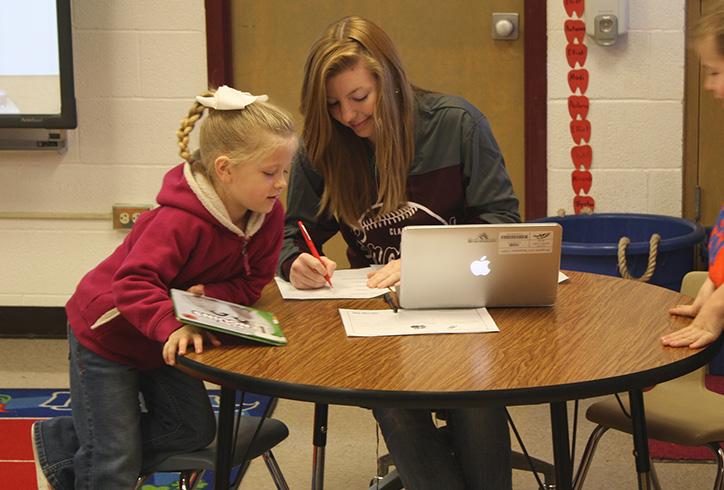
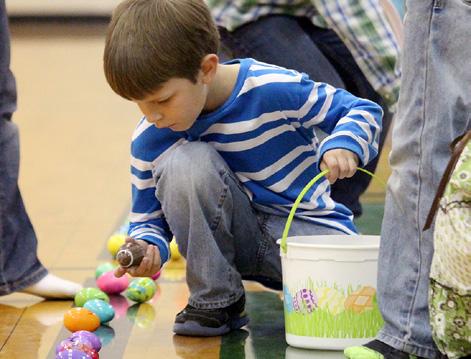
We wish all of our local students a succesful and enjoyable
Aug. 17 Groom Away TBA
Aug. 23 Guthrie Away TBA
Aug. 30 PCHEA Away 7:00
Sept 6 Groom Away 7:30
Sept 13 Vernon Northside Home 7:30
Sept 20 Chillivothe** Home 7:30
Sept 27 Harrold Away 7:00
Oct. 4 Guthrie Home 7.00
Oct. 11 McLean* Away 7:00
Oct. 18 Patton Springs* Home 7:30
Oct. 25 Motley County* Away 7:30
Nov. 1 Open
Nov. 8 Paducah*** Home 7:30 *District Games ** Homecoming ***Senior Night
HEDLEY JUNIOR HIGH 2024
Sept 6 Groom Away 5:00
Sept 13 Northside Home 5:00
Sept 20 Chillicothe Home 5:00
Sept 27 Harrold Away 5:00
Oct. 4 Guthrie Home 5:00
Oct. 11 McLean* Away 5:00
Oct. 18 Patton Springs* Home 5:00
Oct. 25 Motley County* Away 5:00
Nov. 1 Open
Nov. 8 Paducah* Home 5:00


Classrooms have come a long way since the days when pioneering settlers would send their children to single-room schoolhouses. Modern classrooms might be technical marvels, but one less flashy learning tool remains as valuable as ever.
Newspapers might not be as glamorous as tablets or other gadgets, but they are still an invaluable resource to educators and students. The following are seven ways in which newspapers in the classroom can benefit students.
1. Newspapers build vocabulary. Numerous studies have found that reading can improve youngsters' vocabulary. Each day, newspapers are filled with fresh stories that can introduce kids to new words, helping them to strengthen their vocabularies and make them more effective communicators.
2. Newspapers improve reading skills. Like the old adage says, "Practice makes perfect." Reading newspapers each day can help kids develop their reading and comprehension skills.
3. Newspapers promote critical thinking. Newspaper reporters are trained to objectively report the news, sharing facts without allowing their own opinions to influence their stories. Educators can choose stories from the newspaper to serve as catalysts for discussions that focus not just on the facts listed in the story, but what might be behind them. Such discussions can help youngsters develop their critical thinking skills.

4. Newspapers bring ideas and current events to life. Many children are aware of major world events, even if they don't know or understand the details. Newspaper articles about world events can be used as avenues to discussions about what's going on in the world.
5. Newspapers build global awareness. Customized newsfeeds funneled through social media outlets can make it hard for young people to recognize and understand the world beyond their own communities and interests. Each days, newspapers include local, national and international stories that can illustrate to kids that there's a world beyond their own.
6. Newspapers promote social consciousness. Without newspapers,

young people may never be exposed to the social issues facing their own communities or those issues that are affecting people across the country and the world. Newspapers provide unbiased exposure to such issues, potentially leading youngsters to further explore topics that are shaping their world and even encouraging them to form their own opinions.
7. Newspapers make learning fun. According to a 2017 report from Common Sense Media, kids younger than eight spend an average of two hours and 19 minutes per day looking at screens. Newspapers provide a welcome break from tablets, smartphones and computers, and kids may have fun flipping pages and getting a little ink on their hands.
places more than 200 newspapers in the hands of elementary and junior high students each week during the school year, exposing them to current events and community activities and educational games. We gratefully acknowledge the support of our NIE sponsor and invite other businesses to help expand our program.

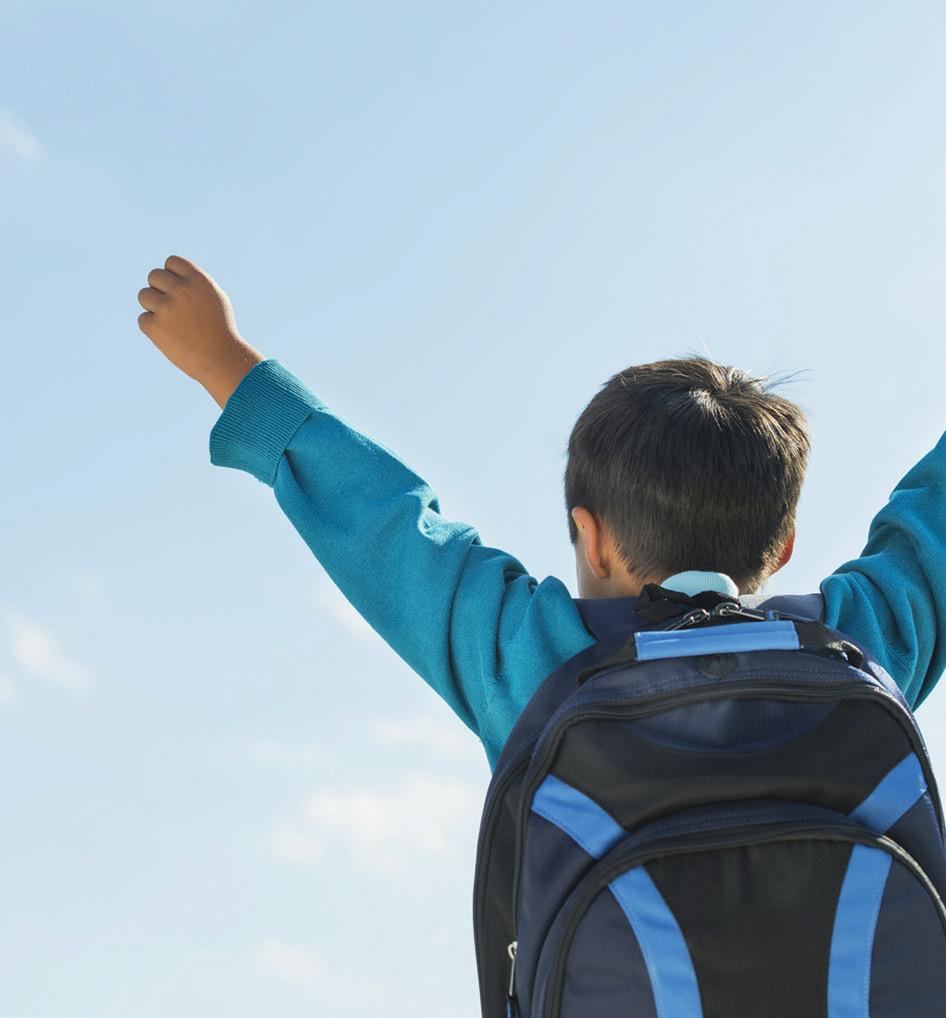
Celebrate new adventures! A new school year brings new friends, new ideas, and new beginnings. A positive attitude from students and parents can make all the difference! Best wishes on a great year!
HERRING BANK HERRING BANK


